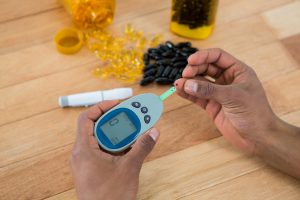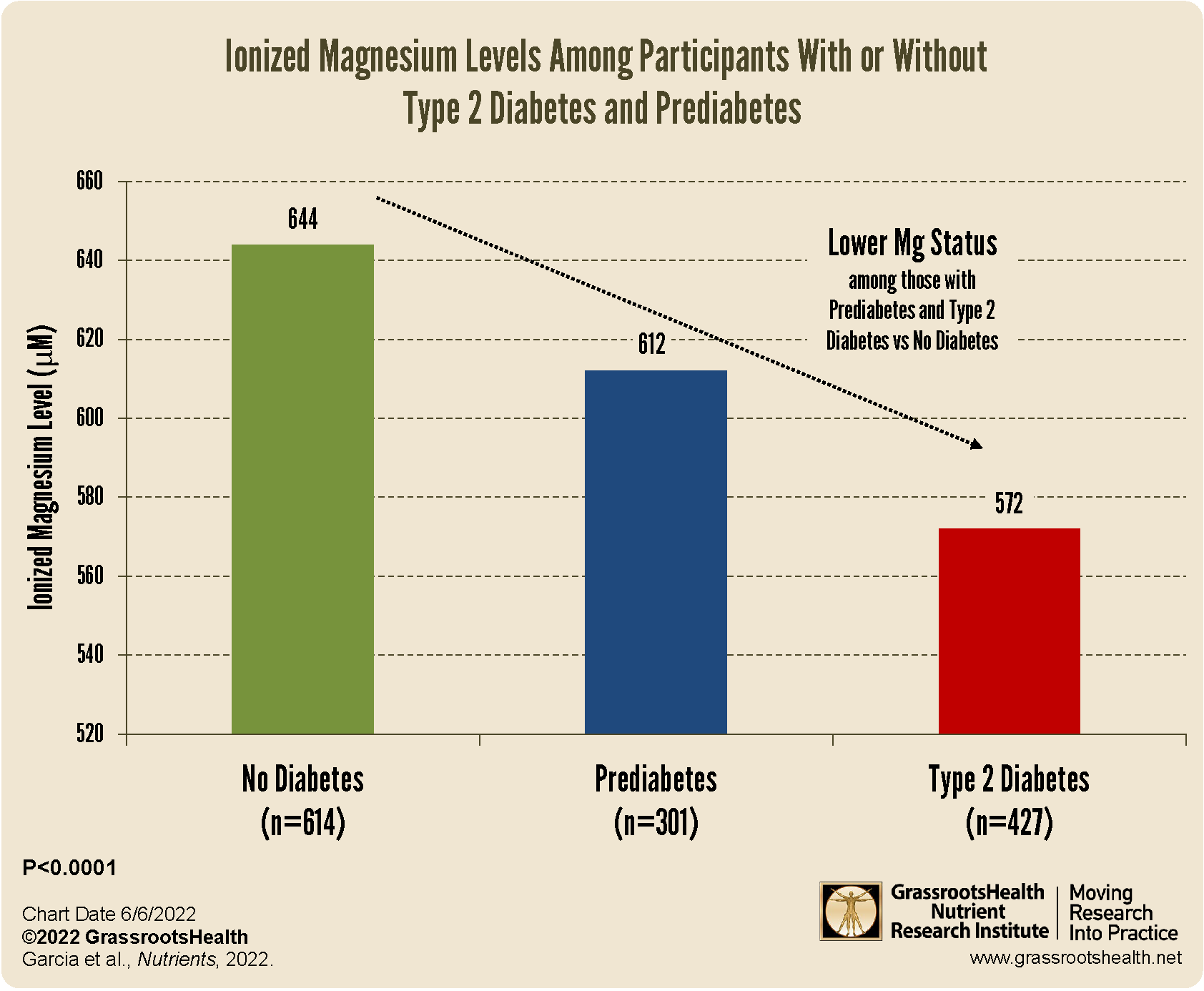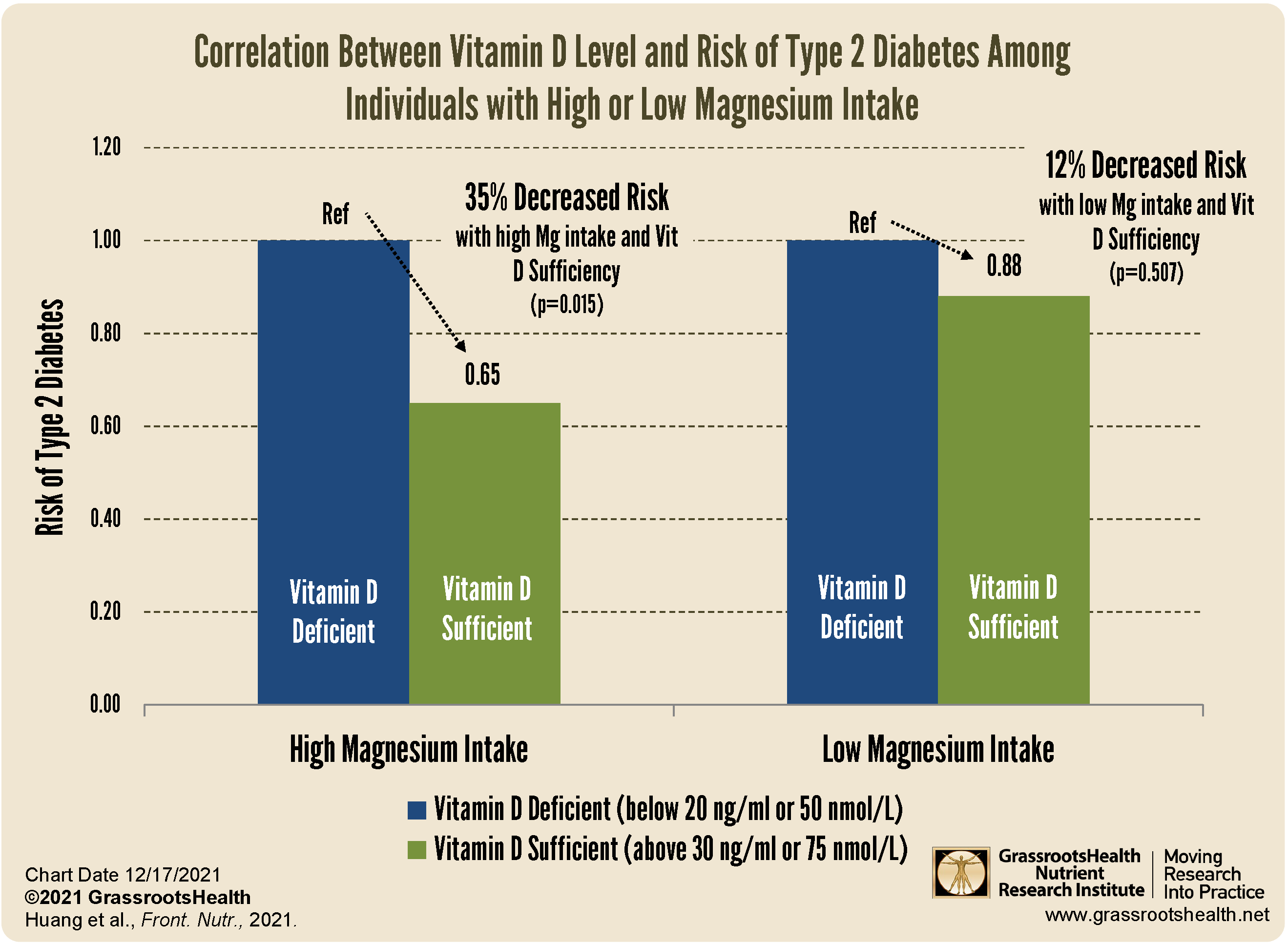Published on August 1, 2023
Studies show that lower magnesium intake and status is associated with a higher risk of having or developing type 2 diabetes
Key Points
- Several studies have shown an inverse relationship between magnesium intake and the incidence of type 2 diabetes, where the lower the magnesium intake, the higher the incidence
- A new study found a significant, inverse association between magnesium status and the future diagnosis of type 2 diabetes, with a lower magnesium status among those who started without diabetes but were diagnosed before the end of the 5 year follow up compared to those who remained diabetes free
- Higher vitamin D levels have also been associated with a decreased incidence of type 2 diabetes, and the significance of the effect was greater among those who got more magnesium

Magnesium is necessary for several important processes involved with glucose and insulin metabolism. Supplementation with magnesium has been shown to improve insulin sensitivity and glucose levels when compared to placebo, leading some researchers to conclude that magnesium may help to prevent metabolic syndrome and type 2 diabetes.
An estimated 48% or more of type 2 diabetics are deficient in magnesium; in fact, several studies have shown an inverse relationship between magnesium intake and the incidence of type 2 diabetes, where the lower the magnesium intake, the higher the incidence. This includes a 2016 meta-analysis by Feng et al. involving 26,299 cases of type 2 diabetes, with results that demonstrated a significant inverse relationship between magnesium intake and the risk of type 2 diabetes and a dose-response relationship in which an increase of 100 mg/day of dietary magnesium intake was significantly associated with a 19% decrease in the risk of type 2 diabetes.
Magnesium Status Correlated to Type 2 Diabetes Incidence and Risk
A study by Garcia et al. looked at the association between ionized magnesium levels and type 2 diabetes among 1342 participants from the Insulin Resistance Atherosclerosis Study (IRAS), which included men and women between the ages of 40-69 years old. The study group used for this analysis included 614 participants without diabetes, 301 with prediabetes, and 427 with type 2 diabetes at baseline who were then followed for 5 years.
The authors found that ionized magnesium levels were independently associated with type 2 diabetes at baseline; magnesium was significantly lower among participants with type 2 diabetes than those without it, and lower among participants with prediabetes compared to those without prediabetes. Overall, there was an significant, inverse association between magnesium status and the future diagnosis of type 2 diabetes (p=0.035), with a lower magnesium status among those who started without diabetes but were diagnosed before the end of the 5 year follow up, compared to those who remained diabetes free.
Overall, this study showed that higher ionized magnesium levels were significantly associated with a decreased risk of having or developing type 2 diabetes. As the authors quote, “These study results confirmed that ionized magnesium measurements are clinically useful for assessing a patient’s risk of progressing to T2D, even in a diverse population with varying glucose levels.”
Magnesium Intake Affects the Association between Vitamin D and Risk of Type 2 Diabetes
Another study by Huang et al. found that magnesium intake affected the association between vitamin D level and the incidence of type 2 diabetes, where the distribution of vitamin D levels between participants with or without type 2 diabetes was not significantly different in the low magnesium intake group, but was in the high magnesium intake group.
In the group with high magnesium intake, there was a 35% significantly decreased risk of type 2 diabetes among the participants with vitamin D sufficiency compared to those with vitamin D deficiency, compared to the group with low magnesium intake, which only had a 12% decreased risk among those with vitamin D sufficiency, and the finding was not significant.
In other words, higher vitamin D levels were associated with a decreased incidence of type 2 diabetes, and the significance of the effect was greater among those who got more magnesium.
Measuring Magnesium Status
The Ionized Magnesium Blood Test, which measures the circulating ionized magnesium (iMg2+) in whole blood, is difficult to obtain and is expensive, however, it is a more accurate reflection of magnesium status than serum, RBC, and whole blood magnesium. This blood test measures the free, bioactive form of ionized magnesium (unbound from its organic and/or inorganic anions), and is helpful for determining the amount of bioavailable magnesium available to the tissues through the blood.
GrassrootsHealth offers the opportunity to measure magnesium status at home using the whole blood magnesium test, which is a better indicator of magnesium status than the serum magnesium test offered by most doctor’s offices and hospitals. Participating through GrassrootsHealth also gives you the tools to move your own personal research into practice, to help determine how to best improve your health with magnesium, vitamin D, and other important nutrients – through testing, tracking, education and analysis!
Make Sure You Are Getting Enough of Both Magnesium and Vitamin D!
 Having and maintaining healthy vitamin D, omega-3s, and other nutrient levels can help improve your health now and for your future. Choose which to measure, such as your vitamin D, omega-3s with the AA:EPA Ratio, and essential minerals including magnesium and zinc, by creating your custom home test kit today. Take steps to improve the status of each of these measurements to benefit your overall health. With measurement you can then determine how much is needed and steps to achieve your goals. You can also track your own intakes, symptoms and results to see what works best for YOU.
Having and maintaining healthy vitamin D, omega-3s, and other nutrient levels can help improve your health now and for your future. Choose which to measure, such as your vitamin D, omega-3s with the AA:EPA Ratio, and essential minerals including magnesium and zinc, by creating your custom home test kit today. Take steps to improve the status of each of these measurements to benefit your overall health. With measurement you can then determine how much is needed and steps to achieve your goals. You can also track your own intakes, symptoms and results to see what works best for YOU.
Enroll in D*action and Test Your Levels Today!







